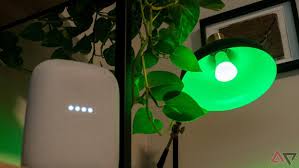Recent advancements in smart home technology have opened doors to innovative applications, with Zigbee-enabled light bulbs standing out as a prime example. These widely used smart devices are on the brink of gaining enhanced functionality through a simple software update. The concept is as revolutionary as it is practical: turning existing Zigbee light bulbs into motion sensors without requiring additional hardware. This development highlights how existing infrastructure can be leveraged to create cost-effective, efficient, and intelligent solutions that add significant value to everyday life.

Zigbee technology has long been a cornerstone of smart home ecosystems, renowned for its reliability, energy efficiency, and ability to support a mesh network. By integrating motion-sensing capabilities into Zigbee light bulbs, manufacturers aim to transform these devices into multifunctional tools that serve not only as lighting solutions but also as essential components of a broader home automation framework. The implications of this upgrade are vast, touching on convenience, security, and energy management.
At the heart of this transformation is the ability to detect subtle changes in light and shadow within a room. Using existing sensors embedded in Zigbee bulbs, the software update enables these devices to act as motion detectors. This innovation eliminates the need for standalone motion sensors, streamlining the smart home setup and reducing costs. The technology relies on analyzing variations in the surrounding environment, translating them into actionable data that can trigger specific responses, such as turning lights on or off or sending alerts to your smartphone.
The practicality of this feature extends to various use cases. For instance, you could program your home lighting system to activate automatically when you enter a room and turn off when no movement is detected. This setup not only enhances convenience but also optimizes energy usage, contributing to lower utility bills. In spaces such as hallways, basements, or storage areas, where traditional motion sensors might be impractical or cost-prohibitive, Zigbee light bulbs equipped with this functionality provide an elegant solution.
From a security perspective, motion-sensing light bulbs add an additional layer of protection to your home. By detecting unexpected movement, these devices can act as deterrents to potential intruders. Integration with smart home security systems allows for automated notifications, giving you real-time updates and peace of mind, whether you are at home or away. The ability to retrofit existing bulbs with this capability makes it accessible to a wide range of users, eliminating the need for complex installations or significant investments in new equipment.
A closer examination of how this update works reveals the sophisticated algorithms and protocols involved. These systems are designed to minimize false positives, ensuring that the lights only respond to genuine movement. Advanced calibration techniques allow the bulbs to distinguish between routine environmental changes, such as shifting shadows from window blinds, and actual motion. This precision is achieved through machine learning models that adapt over time, refining their accuracy based on the specific conditions of your home.
The economic benefits of this update cannot be overstated. For consumers, the ability to upgrade existing light bulbs with motion-sensing capabilities means significant savings. Instead of purchasing and installing separate motion sensors, you can achieve the same functionality with a simple software patch. For manufacturers, this innovation represents an opportunity to add value to their products without the need for extensive redesigns or production changes. The result is a win-win scenario that underscores the potential of software-driven enhancements in the Internet of Things (IoT) landscape.
A comparative analysis of the costs involved in traditional motion sensor systems versus Zigbee-enabled light bulbs with motion detection capabilities further highlights the value proposition.
| Feature/Cost Comparison | Traditional Motion Sensor Setup | Zigbee Light Bulbs with Motion Sensing |
|---|---|---|
| Initial Device Cost | $30–$50 per sensor | $15–$25 per bulb |
| Installation Complexity | Requires wiring or standalone placement | Plug-and-play via software update |
| Maintenance Requirements | Battery replacements or hardware adjustments | Minimal, as it leverages existing bulbs |
| Integration with Smart Systems | Additional configuration required | Seamless with Zigbee networks |
| Total Cost Over Time | High | Significantly lower |
Beyond cost and convenience, the environmental implications of this development are noteworthy. By reducing the need for additional hardware, this technology supports sustainability goals by minimizing electronic waste. The efficient use of resources inherent in Zigbee’s mesh networking capabilities also contributes to lower energy consumption, aligning with global efforts to reduce the carbon footprint of smart home systems.
The broader impact of this innovation on the IoT sector cannot be ignored. It exemplifies how software updates can extend the lifecycle and functionality of existing devices, setting a precedent for future advancements. Manufacturers across various industries can draw inspiration from this approach, exploring ways to repurpose existing infrastructure to meet evolving consumer needs.
In conclusion, the potential to transform millions of Zigbee light bulbs into motion sensors through a simple update represents a breakthrough in smart home technology. It offers practical benefits, including enhanced convenience, improved security, and significant cost savings, all while promoting sustainability. For users, the promise of smarter, more efficient homes is closer than ever, made possible by the seamless integration of advanced software solutions into everyday devices. As this innovation gains traction, it is set to redefine the boundaries of what smart home technology can achieve, marking a significant step forward in the evolution of connected living.










Add Comment